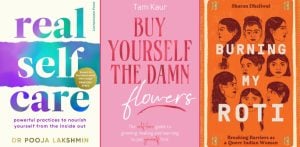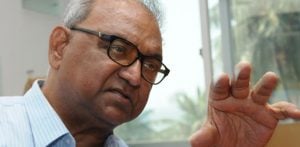What worked in the past is no longer enough today.
Fitness is often misunderstood within South Asian communities, where cultural beliefs, generational perceptions and misinformation continue to shape attitudes towards physical health.
Despite the growing interest in wellness, many South Asians still hesitate to engage in certain fitness practices due to myths passed down over time.
These misconceptions can be more than just harmless ideas. They can potentially worsen already elevated health risks.
South Asians are genetically predisposed to a range of metabolic and cardiovascular conditions, often at lower body weights than other ethnic groups.
This makes intentional and informed exercise not only beneficial but crucial.
However, the lingering presence of outdated and inaccurate beliefs can hinder progress.
Whether it’s discouraging strength training or reducing exercise to walking alone, these ideas overlook the scientific realities of health and fitness.
Addressing these myths isn’t about shaming cultural practices or generational views.
Instead, it’s about empowering South Asians with the right knowledge to take control of their well-being.
When we replace myths with facts, we lay the groundwork for healthier futures, both mentally and physically.
These myths are worth unlearning, not just for aesthetic goals, but to genuinely improve health outcomes in the community.
Here are ten of the most common fitness myths still circulating in South Asian circles, and why it’s time to leave them behind.
Building Muscle Does Not Make You Less Intelligent
 There’s a lingering belief among older South Asians that building muscle is associated with manual labour, low intellect or a lack of sophistication.
There’s a lingering belief among older South Asians that building muscle is associated with manual labour, low intellect or a lack of sophistication.
Muscular physiques are sometimes criticised as being “too much”, particularly for men, while parents may dismiss gym-goers as prioritising brawn over brains.
This idea stems from class-based biases linked to colonial and postcolonial histories, where manual labourers were physically stronger but often lacked formal education.
However, there is no connection between muscle mass and cognitive ability.
Resistance training has been shown to improve brain function, memory and even protect against cognitive decline.
According to the British Journal of Sports Medicine, physical activity is associated with better mental health and cognitive performance, regardless of age.
Dismissing strength training as unintellectual undermines its proven health benefits.
It’s entirely possible, and optimal, to build both brain and body strength simultaneously.
South Asians Are Not Genetically “Too Lean” to Build Muscle
 The notion that South Asians are genetically predisposed to lean bodies and therefore have no need for muscle-building is misleading.
The notion that South Asians are genetically predisposed to lean bodies and therefore have no need for muscle-building is misleading.
This belief is rooted in aesthetic ideals that prioritise thinness, as well as a misunderstanding of South Asian body composition.
While South Asians may appear slim, research indicates they typically have higher visceral fat and lower muscle mass relative to height, often referred to as the “Asian-Indian phenotype”.
A 2019 review in The Lancet Diabetes & Endocrinology explains that this phenotype is linked to increased risks of Type 2 Diabetes and heart disease.
Muscle, on the other hand, plays a vital role in glucose regulation and metabolic health.
For South Asians, building muscle is not just about appearance. It’s a vital strategy to reduce insulin resistance and support long-term health.
Ignoring strength training due to cultural or genetic misconceptions could mean missing out on one of the most effective preventive health tools available.
Protein Supplements Are Not Dangerous or “Unnatural”
 Protein powder often sparks concern among South Asian families, with some dismissing it as “extracted” and therefore dangerous or unnatural.
Protein powder often sparks concern among South Asian families, with some dismissing it as “extracted” and therefore dangerous or unnatural.
Anecdotes of aunties warning against “processed” supplements are common, even among educated circles.
This fear, however, is unfounded.
Protein supplements, especially whey, are simply concentrated forms of dietary protein, derived from milk.
They undergo a process similar to cheese-making and are regulated for safety.
According to the NHS, most people can safely consume protein supplements as part of a balanced diet, particularly if they are physically active or struggle to meet protein needs through food alone.
Given that many South Asian diets are low in protein and high in carbohydrates, supplementing can help support muscle maintenance, improve satiety, and enhance recovery, all of which are especially important for preventing muscle loss and metabolic decline.
Weight Training Does Not Stunt Growth in Teenagers
 Many South Asian parents discourage adolescents from lifting weights, fearing it will stunt their growth.
Many South Asian parents discourage adolescents from lifting weights, fearing it will stunt their growth.
This myth remains widespread, despite decades of research disproving the claim.
Concerns typically centre around the idea that weightlifting affects growth plates, but scientific consensus indicates otherwise.
According to the American Academy of Paediatrics, strength training is not only safe for teenagers but also offers numerous benefits, including improved bone density, mental health, and athletic performance.
The key is proper supervision, technique and progressive loading.
For South Asian youth, early adoption of strength-based exercise can lay the foundation for healthier habits in adulthood, a crucial step considering their elevated risk for metabolic issues later in life.
Strength Training Does Not Make Women “Manly”
 South Asian women often face the stigma that lifting weights will make them appear “bulky” or “manly”.
South Asian women often face the stigma that lifting weights will make them appear “bulky” or “manly”.
This belief reflects deep-rooted gender norms that equate femininity with thinness and softness, rather than strength or athleticism.
However, physiologically, women do not produce enough testosterone to build significant muscle mass without very specific, intensive training.
Instead, strength training enhances tone, posture, endurance and overall functionality.
The National Osteoporosis Society also recommends strength training for women, particularly to combat bone density loss post-menopause, an issue many South Asian women face early.
By breaking free from these restrictive norms, South Asian women can redefine beauty on their terms and prioritise strength as part of self-care and longevity.
Fitness Is Not About “Trying to Be White”
 Some South Asians associate gym culture or fitness routines with Western values, accusing those who engage in them of “trying to be white”.
Some South Asians associate gym culture or fitness routines with Western values, accusing those who engage in them of “trying to be white”.
This mindset reinforces harmful ideas about cultural purity and assimilation, often discouraging younger generations from exploring health-enhancing habits.
But exercise is not culturally exclusive. Physical well-being transcends race, religion or tradition.
A 2021 study in Ethnicity & Health emphasised the importance of culturally tailored fitness programmes to improve health outcomes among ethnic minorities.
That doesn’t mean rejecting one’s roots. It means integrating healthy behaviours that align with cultural needs and physiological realities.
Fitness should be seen not as a betrayal of culture, but as a way of preserving it through longer, healthier lives.
Thinness Does Not Equal Health
 In many South Asian families, being thin is automatically equated with being healthy.
In many South Asian families, being thin is automatically equated with being healthy.
Comments like “she’s lucky, she’s naturally skinny” are common, often ignoring underlying health issues.
This myth is especially dangerous given the prevalence of “metabolically obese normal weight” (MONW) individuals in South Asian populations.
These individuals may appear slim but carry high levels of visceral fat, the kind that surrounds internal organs and significantly raises the risk of diabetes and heart disease.
A BMJ Open study highlights that South Asians develop metabolic issues at lower BMIs compared to White Europeans.
Relying solely on appearance can delay critical interventions and encourage complacency.
True health is holistic, encompassing strength, energy, and internal function, not just outward slimness.
Walking Alone Is Not Enough for South Asians
 While walking is an excellent low-impact activity, many South Asians, particularly elders, believe it is the only form of exercise needed.
While walking is an excellent low-impact activity, many South Asians, particularly elders, believe it is the only form of exercise needed.
While beneficial, walking alone may not be sufficient to combat the unique health risks faced by this population.
South Asians often have lower levels of cardiorespiratory fitness and higher insulin resistance, meaning more targeted and varied exercise strategies are needed.
The British Heart Foundation recommends a combination of aerobic and resistance exercise to improve heart health and metabolic function, particularly in higher-risk groups.
Supplementing walking with bodyweight training, light resistance work, or yoga can enhance results and offer greater protection against chronic conditions.
Past Generations Were Active in Different Ways
 Older South Asians often recall being fit without gyms or workouts, using this as a reason to avoid structured exercise today.
Older South Asians often recall being fit without gyms or workouts, using this as a reason to avoid structured exercise today.
But the lifestyles of previous generations were vastly different, with far more incidental activity through daily chores, walking and manual tasks.
Modern lifestyles are largely sedentary, dominated by desk jobs and technology.
According to Public Health England, physical inactivity is a major contributor to preventable diseases, particularly in ethnic minority populations.
What worked in the past is no longer enough today.
Acknowledging this shift allows communities to adapt and adopt new strategies that fit the current environment and health context.
Fitness Is Not a Luxury
 Some families view gym memberships or personal training as extravagant or wasteful.
Some families view gym memberships or personal training as extravagant or wasteful.
But fitness should be considered a preventive health investment, not a luxury.
Regular physical activity reduces the risk of diabetes, hypertension, and cardiovascular disease, all of which have high prevalence among South Asians.
A study in The Lancet Global Health found that even moderate improvements in physical fitness had substantial effects on reducing insulin resistance among South Asian adults.
Investing in fitness now could mean avoiding expensive treatments and medications later.
Home workouts, park-based exercises, and online tutorials offer affordable options for those on tighter budgets, proving that fitness can be both effective and accessible.
The fitness myths that continue to circulate in South Asian communities are more than just outdated beliefs.
They represent barriers to better health.
From dismissing strength training to equating thinness with wellness, these misconceptions prevent people from making informed, proactive choices about their bodies and futures.
By addressing these myths head-on with empathy and evidence, South Asians can redefine what health means on their own terms.
The cultural lens through which fitness is viewed needs updating, one that embraces modern science, acknowledges specific genetic risks, and champions self-care as a cultural strength rather than a Westernised ideal.
Breaking free from these myths isn’t just about physical transformation.
It’s about reclaiming autonomy over health, extending longevity, and uplifting a community that deserves better outcomes.
Fitness, when grounded in truth and tailored to South Asian realities, becomes a powerful tool for change.






























































